New Zealanders protest against Springbok rugby tour, 1981
Time period, location description, methods in 1st segment, methods in 2nd segment, methods in 3rd segment, methods in 4th segment, methods in 5th segment, methods in 6th segment, additional methods (timing unknown), segment length, external allies, involvement of social elites, nonviolent responses of opponent, campaigner violence, repressive violence, classification, group characterization, groups in 1st segment, success in achieving specific demands/goals, total points, notes on outcomes, database narrative.
Halt All Racist Tours (HART) was organized in New Zealand in 1969 to protest rugby tours to and from South Africa. Their first protest, in 1970, was intended to prevent the All Blacks, New Zealand’s flagship rugby squad, from playing in South Africa, unless the Apartheid regime would accept a mixed-race team. South Africa relented, and an integrated All Black team toured the country.
Two years later, the Springboks arranged a tour of New Zealand. HART held intensive planning meetings, and, after laying out their nonviolent protest strategies to the New Zealand security director, he was forced to recommend to the government that the Springboks not be allowed in the country. Prime Minister Kirk, though he had promised not to interfere with the tour during his election campaign, canceled the Springbok’s visit, citing what he predicted would be the “greatest eruption of violence this country has ever known.”
HART remained active in the anti-apartheid community, continuing to protest the Springboks, and helping to organize a boycott of the 1976 Montreal Olympics. The International Olympic Committee had not banned New Zealand after the All Blacks had toured South Africa, and many African countries saw this failure as a tacit endorsement of Apartheid. In 1980, New Zealand again attempted to bring the Springboks to New Zealand.
The Springboks arrived on July 19, 1981. Though they were officially welcomed by the New Zealand government, there was a sense of dread and anticipation that surrounded their arrival – perhaps, some thought, the 1981 tour should have been cancelled like the tour in 1972 was. The government officials could not anticipate, however, that the country was about to fall into “near-civil war.” In response to HART, pro-rugby groups like Stop Politics in Rugby (SPIR) organized in an effort to help the Springbok’s tour succeed. Both sides tended to be easily identified by armbands that made their affiliation clear. In particular, HART activists wore their armbands for the entire length of the tour, subjecting themselves to constant ridicule and the threat of violence, despite their commitment to nonviolent protest only.
The Springboks played their first game on July 22 in Gisborne. An anti-Springbok rally took place that day, near the rugby pitch. When the campaigners arrived at the arena, they were confronted by pro-rugby demonstrators. Because Gisborne, like most cities in New Zealand, was close-knit, demonstrators on both sides knew each other, and were not afraid to call each other out for supporting the wrong side, whichever they believed that was. The pro-rugby demonstrators did not restrict themselves to words, even throwing stones at the other side. The anti-Springbok protesters could not stop the match that day. Though they were able to break through the perimeter fence, and engage the pro-tour demonstrators face to face, they were prevented from occupying the field. Though both sides reported that they were uneasy with the clashes between fellow New Zealanders, neither side was easily swayed.
Three days later, the Springboks were scheduled to play in Hamilton. Anti-Springbok planners had circulated a strategy that would hopefully allow them to tear down the fence, invade the field, and disrupt the match. Protesters had also secured more than 200 official tickets to the match, to make sure that their presence was felt, even in the event that they could not storm the pitch. Despite the presence of more than 500 police officers and a sizable pro-rugby contingent, the anti-Springbok march would prove unstoppable. 5000 anti-Springbok protesters descended upon the Hamilton pitch, and more than 300 made it onto the field, forcing a match cancellation. Protesters chanted that the whole world was watching. Many of the demonstrators were arrested, and those on the pitch endured a constant bombardment of bottles and other objects from rugby fans in the stands. This entire situation was captured on live TV and shown around the world.
With tensions in New Zealand reaching astronomical proportions, the Springboks were next scheduled to play four days later, on July 29. The anti-Springbok protesters were largely absent from the match, but had instead planned a march on the South African consulate in Wellington, New Zealand. Despite police declaring that a march was not permitted, the protesters marched right up to the police line on Molesworth Street. The police began to stop the marchers with their batons, violently forcing them away from the consulate building. The marchers, stunned and bloodied, turned towards the police station, chanting “Shame, shame, shame.” When they arrived, the accosted marchers pressed assault charges on the police that had attacked them. Though the charges were dismissed, the policing of the tour protests had taken a turn for the worse. From this point on, protesters were careful to carry shields and wear crash helmets in order to protect themselves from attacks.
Protests would continue for the entire length of the Springbok’s stay in New Zealand. Only one more match was cancelled, in Timaru. However, there were a few more notable encounters. In Christchurch, on August 15, protesters failed to occupy the pitch in time for the game to be cancelled. The police cordon around the arena held, and several observers believe that the police saved the lives of many protesters. The attacks of rugby supporters were growing more and more violent, The Christchurch incident was characterized by flying blocks of cement and full beer bottles. Had the anti-Bok protesters succeeded in reaching the field, the attacks would certainly have been even more dangerous.
The final match of the tour was in Auckland on September 12. Not only was the match important as a final chance for protesters to demonstrate their opposition to the Springboks, it was the deciding third meeting between the Springboks and the All Blacks. Doug Rollerson of the 1981 All Blacks recalled that it seemed very important for the All Blacks to win the match, to show that a mixed team was superior to the segregated Springbok side. When the All Blacks won, the sense of victory in New Zealand was similar to the US victory over the Soviet Union in 1980 – the triumph of righteousness over the evil empire. However, for most observers around the world, the off-field events were far more important. Though the protesters were generally non-violent, there were many others that joined in the marches – HART characterized them as opportunists that simply wanted to fight with police. Though eruptions of violence had taken place throughout the campaign, they were largely viewed by the protesters as third-party actions, and HART consistently distanced themselves from violent attacks. More memorably, Max Jones and Grant Cole commandeered a prop plane, and proceeded to drop flares and flour bombs on the pitch during play in an attempt to stop the game. Though the game continued, the actions of the protesters were again the primary news story in New Zealand and throughout the world.
Though the anti-Springbok protests were largely unsuccessful in that the vast majority of the planned contests took place, they were able to raise an incredible amount of awareness for the anti-Apartheid movement. Nelson Mandela recalled that when the game in Hamilton was cancelled, it was “as if the sun had come out.” HART would continue protesting until the fall of the Apartheid regime.
Influenced and influenced by anti-Springbok protests in other countries like Australia, Britain (see "Australians campaign against South African rugby tour in protest of apartheid, 1971" and "British Citizens Protest South African Sports Tours (Stop the Seventy Tour), 1969-1970") (1,2).
This campaign was also influenced by the New Zealand Waterfront Strike (1951) (1).

Additional Notes
Name of researcher, and date dd/mm/yyyy.
- Home Kāinga
- Our Story Ngā Kōrero
- Our Tours Ngā Haerenga
- Wellington Museum Te Waka Huia o Ngā Taonga Tuku Iho
- Space Place Te Ara Whānui ki te Rangi
- Nairn Street Cottage
- Cable Car Museum
- Careers Umanga
- What’s On Ngā Kaupapa Whakatairanga
- Museum Blog
- Our Venues Ngā Wāhi
- Venues at Wellington Museum Ngā Wāhi i Te Waka Huia o Ngā Taonga Tuku Iho
- Venues at Space Place Ngā Wāhi i Te Ara Whānui ki te Rangi
- Birthday Parties Ngā Pāti Rā Whānau
- Recommended Caterers Ētahi Kaitaka Kai
- Education Blog Rangitaki Mātauranga
- Space Place
- Wellington Museum
- Space Place Wāhi Haumaru
- Venues at Space Place Ngā Wāhi i Te Wāhi Haumaru
- Support Us Tautoko
- Museum Blog Te Kāpata Te Curio
Remembering the 81′ Springbok Tour
40 years on, we look back and talk to two Wellington residents who remember those turbulent times.
“All for the sake of a Rugby game. Doesn’t make sense does it?” – Liz Roberts
During the winter of 1981, violent clashes between rugby supporters, protesters and the police erupted all over Aotearoa in one of our country’s most tumultuous periods. The Springbok rugby tour brought us to the brink of civil war, as many protested the racial segregation of Apartheid South Africa and made links to racism at home.
On the 29th of July, 1981, protesters opposing the Springbok Tour were met by baton-wielding police trying to stop them marching up Molesworth St to the home of South Africa’s Consul to New Zealand.
This was the first time police had used batons against protestors, and the violence horrified many New Zealanders. Former Prime Minister Norman Kirk’s prediction eight years earlier that a tour would result in the ‘greatest eruption of violence this country has ever known’ seemed to ring true.
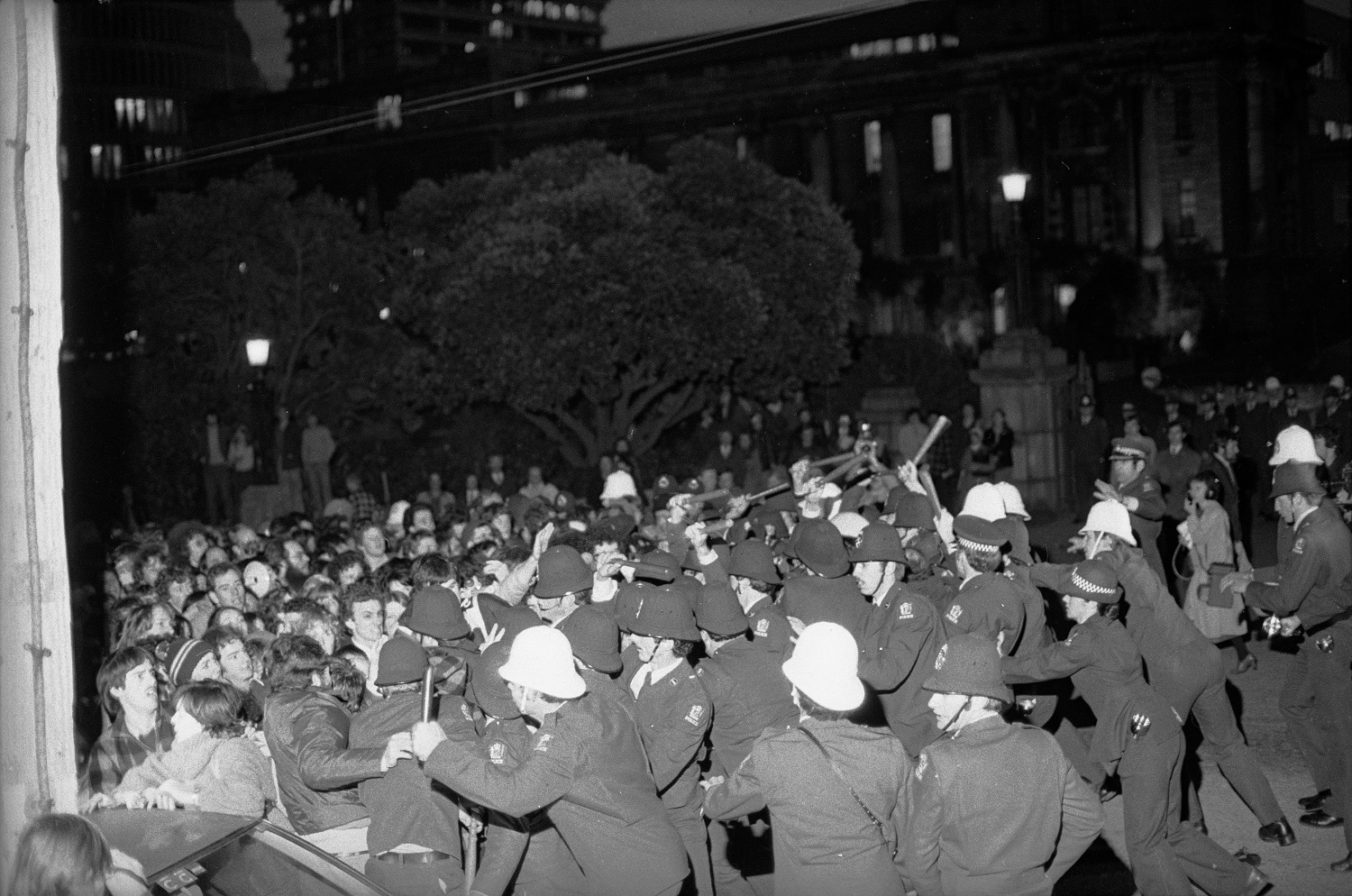
Wearing helmets like this one, 7000 protesters gathered in central Wellington and around Athletic Park on 29th of August 1981 to stop pro-tour supporters from gaining access to the second test match. Once again the police intervened, this time using long batons, with many protesters injured as a result. This helmet was worn by Anne Bogle during other anti-tour protests.
The Merata Mita Estate permitted us to use the Wellington footage from PATU! (1983) – the powerful documentary directed by Merata Mita which shows the harrowing events of the 1981 Springbok Tour.
Ngā Taonga Sound and Vision meticulously restored and preserved the original documentary for the 40th anniversary. With their approval, we were able to use their newly restored and remastered version for these videos.
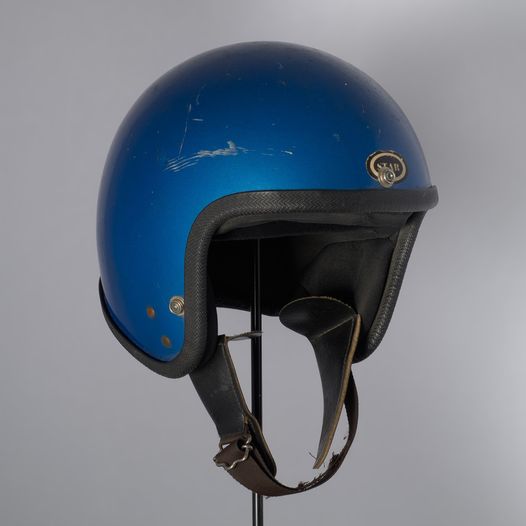
Liz Roberts lived on Te Wharepōuri Street in Berhampore, close to Athletic Park, and recalls the events of the 2nd Test on August 29th, 1981, where she saw protesters clash with Police on her street.
Anne Bogle was a young Victoria University student studying Law and History in 1981 – and attended a number of Anti-Tour protests in Wellington – she took part in the protest group that blocked the Wellington Motorway on July 25th and the infamous Molesworth Street incident a few days later on July 29th. The protester helmet she used during the anti-tour demonstrations is currently displayed at Wellington Museum.
Thank you to the Merata Mita Estate for their permission to use parts of the film and also to Ngā Taonga Sound and Vision for their great mahi on the preservation and restoration of this important piece of film taonga .
Also thank you to Anne Bogle and Liz Roberts for sharing their stories.
Pin It on Pinterest
Important note about COVID Red Settings:
At Orange our libraries are open with face masks required. Vaccine passes are no longer required. Please stay home if you are unwell. Learn more about visiting our branches at Orange .
Service update:
Miramar Library will reopen at 2pm — maintenance related to last night's stormy weather is now complete. Thank you for your patience.
Service note:
Wadestown Library will close early on Thursday 12 August at 5:30pm for a community meeting.

Wellington City Libraries
Te matapihi ki te ao nui, te haerenga a ngā piringa pāka ki aotearoa i te tau 1981 the 1981 springbok tour of new zealand.

Other heritage topics
- Architecture |
- The sinking of the Wahine |
- Wellington waterfront |
- Earthquakes in Wellington |
- More heritage resources
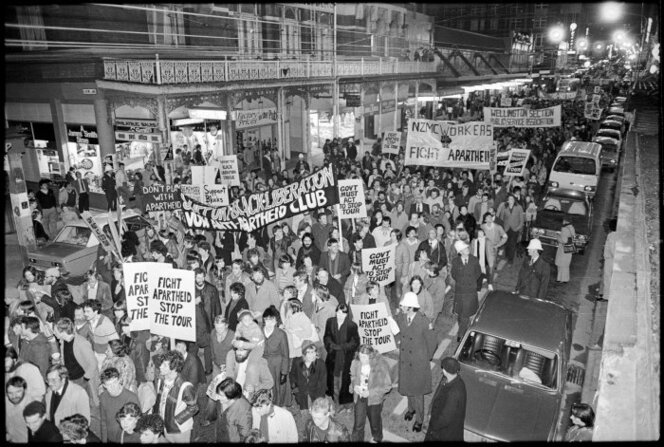
The rivalry between the Springboks and the All Blacks is one of the longest and most enduring between two sporting nations. In the past, generations of rugby players and enthusiasts from both countries viewed a series victory over the other nation as being the pinnacle of achievement in the sport. Alongside the history of fierce competition went a tradition of hospitality towards the visiting side.
In 1956 and 1965 when the South African rugby team toured New Zealand, they were showered with warmth and generosity wherever they went. Yet 25 years later, the 1981 Springbok tour became one of the most divisive events in New Zealand history.
Its impact went far beyond the rugby ground as communities and families divided and tensions spilled out onto the streets and into the living rooms of the nation. What were the events that made this tour so significant? What motivated ordinary Kiwis to take such extraordinary action against one another?
Although things had been far from perfect between my parents, the Springbok tour caused such tension and stress that we could not live together in the same house and function as a family unit. An example of the increase was when we, as a family, watched the evening news. Often one side would raise their voices in abuse and offensive name calling towards public figures. Later the abuse was turned in an indirect way on individual family members. This was done by blaming the chaos and disruption to rugby games in individual family members, their friends and associations. As the tour went on and the turmoil increased, the negative feelings intensified to such as degree that feelings of dislike, anger and incomprehension dominated our home. It's Just a Game (anon), in, The New Zealand Experience : 100 Vignettes, collected by B. Shaw & K. Broadley, 1985 .
From Digital NZ
Central library closure — collection availability.
Unfortunately much of our heritage collection is currently not available through our online catalogue — because of the closure of the Central Library, much of this collection is in storage. We hope to make it available again soon, but in the meantime, we suggest visiting the National Library of New Zealand in Thorndon (Corner Molesworth & Aitken St) to access these book titles and newspaper resources.
- Visiting the National Library
- Using the National Library Catalogue
Newspaper articles
Unfortunately, contemporary newspaper accounts of the Springbok Tour from 1981 fall into a time period where newspapers are generally not even indexed for searching, let alone available in full text online — see our finding historical Wellington newspaper articles resource.
That being said, information about (and sometimes the full text of) many anniversary accounts (10 years, 20 years later etc.), can be found online (see Online databases below) — and contemporary accounts can be accessed on microfilm if you know approximate dates (we've provided a table of key dates below).
Finding Historical Wellington Newspapers
Tip: Remember that many reports will not appear in newspapers until the following day.
Magazines — online databases
Our online databases can also be used to access a large number of articles about the tour which have previously been published in magazines . Though the databases do not go back as far as 1981, they do contain many retrospective articles written since then.
- Magazine databases
- New Zealand databases
- Newspaper databases
To access contemporary accounts of the Springbok Tour in magazines, we recommend visiting the National Library on Molesworth Street (see collection note above).
To find magazine titles of interest, have a read of the article below:
Story — Magazines and periodicals in New Zealand
Heritage Links (Local History)
The Springbok Tour
A DigitalNZ Story by Hana McIntyre
A digitalNZ story by Hana McIntyre
The springbok tour of the 1980’s was the largest civil disturbance New Zealand had seen in thirty years. The whole of New Zealand was divided over the tour, this division of the country lasted over fifty days. The Springbok tour was a real factor in the way New Zealand grew as a county. The outcomes that arose from the tour has led New Zealand to find and express our identity as people and as nation.
Maori take a stand
A group of maori protesters stand together with helmets on as police with baton smarch behind them.
Museum of New Zealand Te Papa Tongarewa
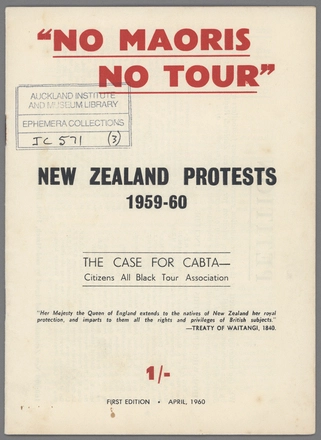
The beginning
This pamphlet was given out in the 1960's in an effort to have maori included in the tour.
Auckland War Memorial Museum Tāmaki Paenga Hira
Together as a nation
All people of NZ came together to protest the tour, despite the debate on NZ racism, people of all backgrounds joined.
The tour was a useful tool as it helped to kick start the discussion of New Zealand's identity. For many decades New Zealand was in a limbo, we had the fundamentals of a culture events, people and objects all people could relate to. This is prominent in the source of the tour, rugby. Such a staple in ‘kiwi culture’, rugby is a thing everybody could enjoy no matter their race, age or gender. Rugby was a nationwide spot that the rest of the world knew as kiwi culture. However, this all changed when the announcement was made that the All Black would be taking am ‘all white’ team to play the springbok tour in South Africa.
Police resistance
Police and protesters in 1981
Children joined the fight
The tour did not only see adults who fought and protested, but it also saw young children protesting with their familie.
NZ Police 1981
Police where given 'night sticks' to keep protesters under control.
A nation always slightly confused about where the line of culture stood between Maori natives and the pakeha. This was an event that would change the way Maori people saw themselves and their culture within New Zealand's culture. People started to stand against the tour, peaceful marches where organized, rallies with children were held. People even boycotted games in an effort to bring awareness to the fact that an ‘all white’ team was unacceptable in a country where its native people would not be included in such a prominent activity that defined the nations sporting culture.
The riot squad posing for a picture in 1981. They where a step up for NZ police and a shock for NZ people.
Peaceful protesters fight against the Springbok tour and for the recognition of NZ's own faults.
The uncle of the of the captain of the NZ Maori team stood with the NZ Police in napier in 1981
Alexander Turnbull Library
Maori and Pacifica people started to express their identities more, “people started to realize you can’t protest against racism 6,000 miles away when it’s right here in your country” - John Minto This quote from John Minto clearly sums up the thoughts of many people at the time. How are we as a country supposed to find a collective identity if we cannot even see the own blatant racism that happens daily in New Zealand.
The New Zealand Police force are not known to be aggressive or violent. However, the springbok tour bought out the worst in the Police of New Zealand. On the night of the 21st of July 1981 Police brought down their ‘nightsticks’ onto a crowd protester’s who refused to ‘halt’, leaving many people with injuries. This is a prominent event within the Springbok tour. However, New Zealand does not let this define our police nor do we let it impact our culture in a manner where we lost all of the good relations between police and the New Zealand public. This however did tend to complicate the traditional depictions of kiwi culture, as we now had to reinvent the culture of NZ Police.
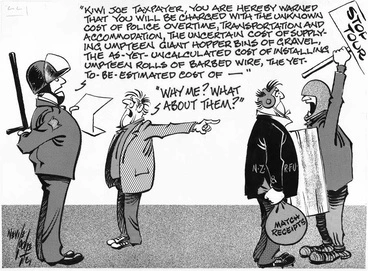
Public opinions
The tour effected everyone, the people who had a voice in society often used it in many ways this time a comic was drawn
Manatū Taonga, the Ministry for Culture and Heritage
![[Springbok Tour - Auckland street protest] Image: [Springbok Tour - Auckland street protest]](https://thumbnailer.digitalnz.org/?resize=770x&src=https%3A%2F%2Fmedia.api.aucklandmuseum.com%2Fid%2Fmedia%2Fp%2Fd3085a739ec91232075a008722345e591fec81aa%3Frendering%3Dstandard.jpg&resize=368%253E)
Police vs Civilians
The tour of 1981 hindered civilians relations with NZ Police.
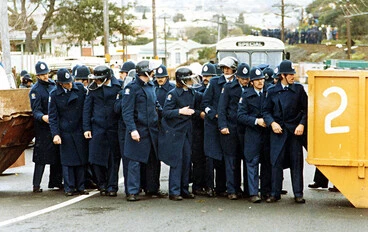
Police force
Police men and women get ready to face another encounter with protesters.
The tour tells us many things about how kiwis expressed their identities in the past. New Zealand has never been a violent country, new Zealanders have tended to express and convey their feeling through actions and speech. This is a part of kiwi identity in itself, we don’t identify as aggressive people or a nation who is an aggressive world party. This alone reinforces the idea of traditional ‘Kiwi Culture’. We are known as a people of fierce warriors but also known as a nation of respect and understanding.
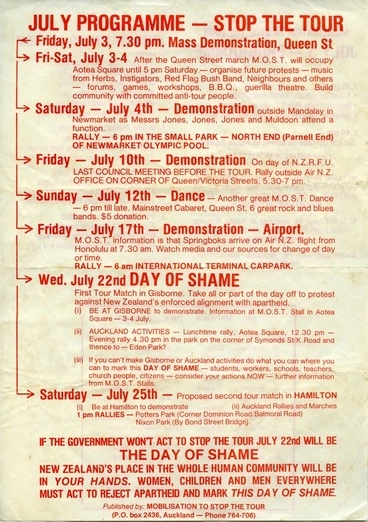

Springbok Tour protest programme
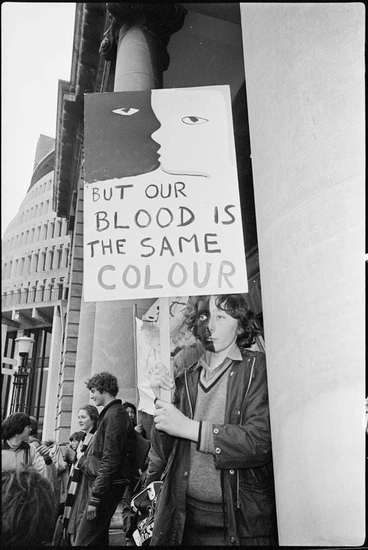
School children protesting, 1981 Springbok tour
Furthermore, this event deepened our Maori populations identity within New Zealand. The tour made many people realize how poorly our own native people has been treated within our society. This was a catalyst for the change that we see today. Over the past thirty years New Zealand’s identity has become much more inclusive of Maori and all their traditional customs. Maori have become a large part of Kiwi identity and a larger part of ‘kiwi culture’. While the tour was a confusing time for many New Zealanders its consequence of the highlighting of Maori injustice helped to confirm what we see now as ‘traditional kiwi culture’.
New Zealand has always been a proud country, we like to think that we have always had each other's backs and continue to do so even through the toughest of times. The springbok tour was a major exception to this belief. However, this tour ended up adding value and lessons to which became some of New Zealand's most important values and morals. These have now become what we call ‘Kiwi culture’.
Peaceful Protest 1981
The people of New Zealand banded together for peaceful protests against the tour in Wellington 1981
Bibliography
References:
M. (2014, August 5). 1981 Springbok tour. Retrieved from https://nzhistory.govt.nz/culture/1981-springbok-tour
T. (2006, July 16). Springbok Tour Protests 'Good For Maori'. Retrieved from http://www.scoop.co.nz/stories/PO0607/S00145.htm
M. (2018, July 20). Police baton anti-tour protesters outside Parliament. Retrieved from https://nzhistory.govt.nz/police-baton-anti-springbok-tour-protestors-near-parliamentv
Listener, T. (2016, November 21). Inside the 1981 Springbok tour. Retrieved from https://www.noted.co.nz/archive/listener-nz-2011/inside-the-1981-springbok-tour/
Wellington City Libraries. (n.d.). Retrieved from http://www.wcl.govt.nz/heritage/tour.html
Roughan, J. (2017, August 25). NZ memories: Protests during the Springboks tour. Retrieved from https://www.nzherald.co.nz/nz/news/article.cfm?c_id=1&objectid=10830511
http://www.aucklandmuseum.com/collection/object/am_library-ephemera-11756
https://natlib.govt.nz/records/22905580?search%5Bi%5D%5Bcollection%5D=Dominion+post+%28Newspaper%29%3A+Photographic+negatives+and+prints+of+the+Evening+Post+and+Dominion+newspapers&search%5Bi%5D%5Bprimary_collection%5D=TAPUHI&search%5Bi%5D%5Bsubject%5D=Police&search%5Bpath%5D=items
Help us improve DigitalNZ
Do our short survey and let us know how we're doing.
- Explore Tūhura
- Collections Ngā Kohinga
- Interviews Ngā Uiuinga
- Profiles Ngā Tāngata
- Watch list Rārangi Mātakitaki
The Springbok Tour - 35 Years On
Tuesday 19 July marks the 35th anniversary of the Springboks' arrival in New Zealand for the 1981 rugby tour. Collected below are classic documentaries on the tour and subsequent mass protests ( Patu! , Try Revolution ), anti-tour protest songs, and a doco on the All Blacks’ first post-apartheid tour of South Africa. There's also an excerpt from Tom Scott's 2011 Springbok tour drama Rage .
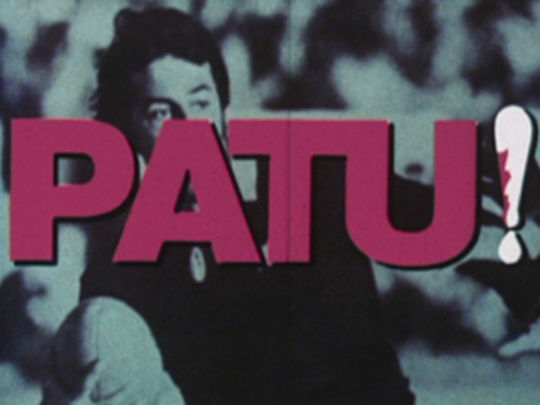
Film, 1983 (Documentary, NZ History)
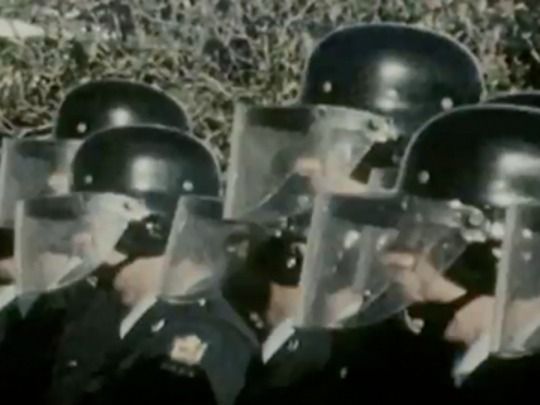
Try Revolution
Television, 2006 (Documentary, NZ History)
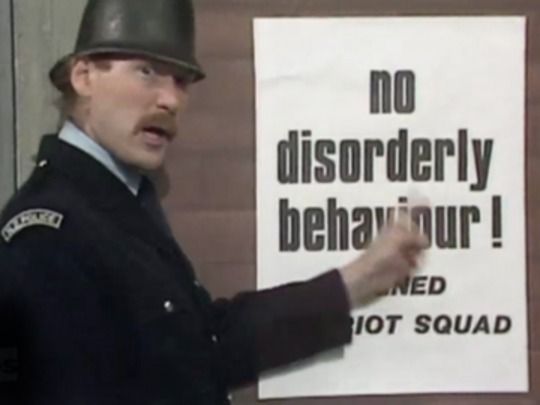
Music Video, 1981 (Rock, Soul)
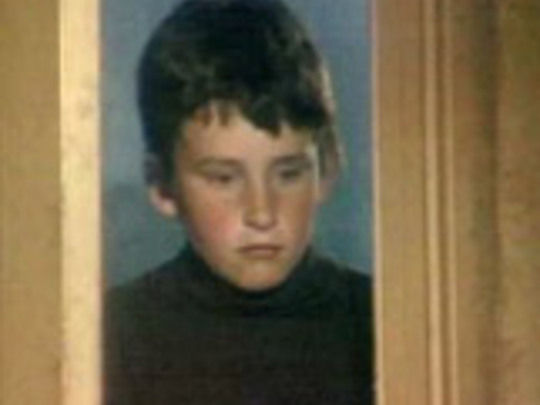
The Garlick Thrust
Television, 1983 (NZ History, Drama)
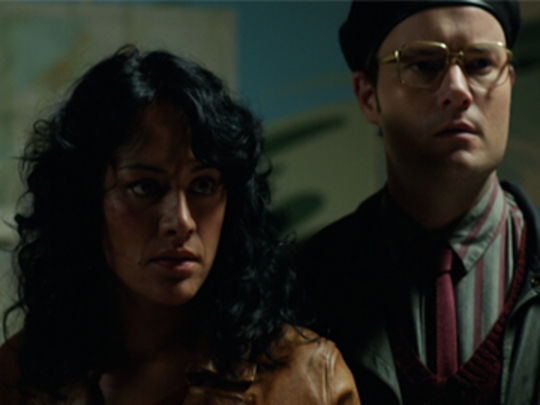
Television, 2011 (NZ History, Drama)
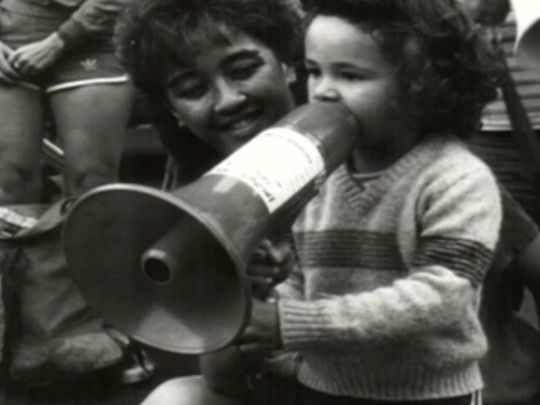
Children of the Revolution
Television, 2007 (Documentary, NZ History)
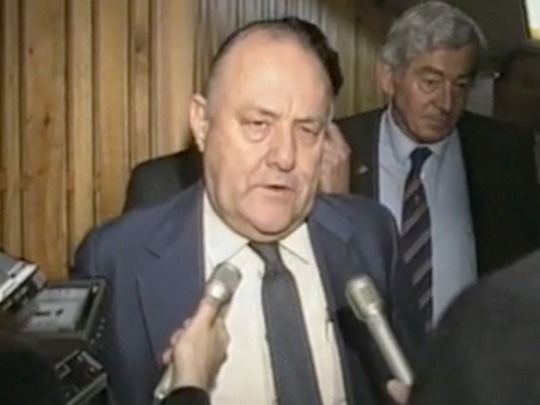
Revolution - 1, Fortress New Zealand
Television, 1996 (Documentary, NZ History)
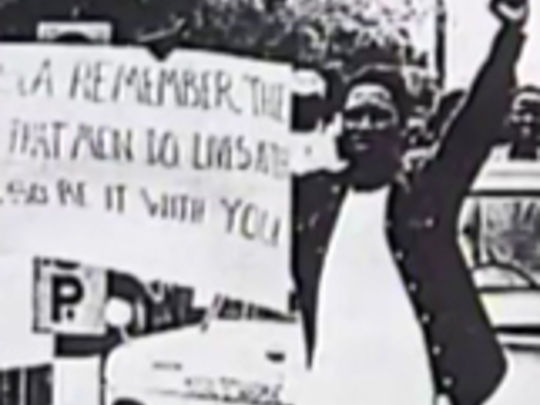
Music Video, 1981 (Reggae)
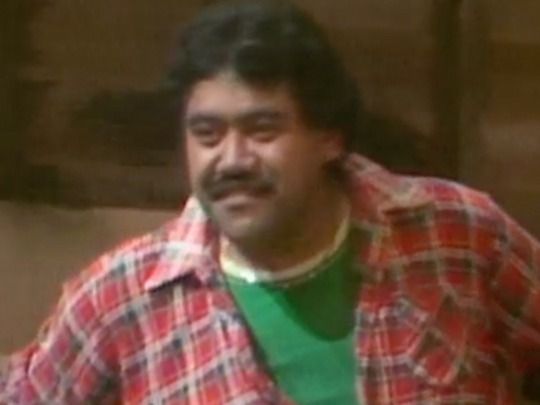
Loose Enz - The Protesters
Television, 1982 (Drama, Māori)
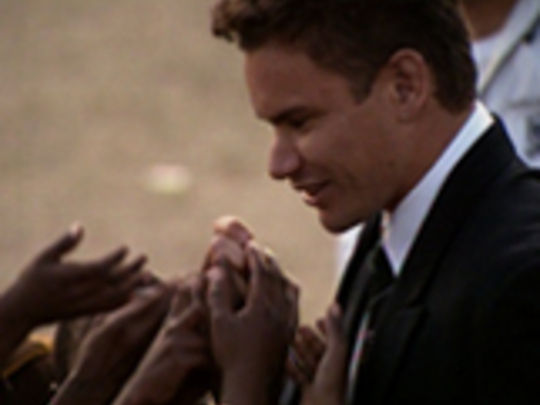
All Blacks for Africa - A Black and White Issue
Television, 1992 (Sport, Documentary, NZ History)
Don't have an account? Create an account here
- How to & FAQ
- Ask a librarian form
- Live Online
- Mobile Printing
- Log In / Register
- My Library Dashboard
- My Borrowing
- Checked Out
- Borrowing History
- ILL Requests
- My Collections
- For Later Shelf
- Completed Shelf
- In Progress Shelf
- My Settings

New For You New Titles & Selector Picks
- Christchurch City Libraries Ngā Kete Wānanga o Ōtautahi Blogs
1981: Springbok Tour and Protests
Last week, on 15 August, it was the anniversary of the first test match held in Christchurch of the infamous 1981 Springbok Tour. A controversial time in New Zealand’s history, the 1981 Springbok Tour demonstrations represent a time when New Zealand was divided culturally and politically.
By Batons and Barbed Wire
The context of the 1981 Springbok Tour was the political climate at the time, specifically, that the legal status of citizens in South African was determined by their race. This was the era known as Apartheid, and it was how South African society was organised from 1948 until the end of the regime in 1991.
There were three racial categories under Apartheid Law; White, Black, and Coloured. Under the rules of Apartheid people from the different racial categories were not allowed to interact with each other. This applied to sport, too. What this meant, in practice, was that White, Black, and Coloured athletes were not allowed to compete against, or play with, each other.
During the Apartheid regime, South Africa became an international pariah, marginalised in many arenas by the international community. This extended to international sports as well as the United Nations called for a sporting boycott on South Africa. This led to South Africa being expelled from FIFA and the IRB. For this reason, South Africa were not present at the first two Rugby World Cups in 1987 and 1991.
The controversy involving New Zealand, and specifically New Zealand rugby, has its own history before the 1981 tour. In 1970, the All Blacks toured South Africa with a mixed race team. In this instance, a mixed race All Blacks team was allowed to play the all white South African team on the condition that the Māori and Pasifika players in the All Blacks were declared as “honorary whites” for the duration of the tour. This sparked controversy in Aotearoa-New Zealand for multiple reasons. Not only did this go against the UN call for a sporting boycott on South Africa, it also reflected badly on the race relations in New Zealand that Māori and Pasifika people had to disavow their identity in order to play.
Following this, in 1977, member nations of the Commonwealth - including New Zealand - agreed to the Gleneagles Agreement . In short, the Gleneagles Agreement was to show support for the international campaign against Apartheid and meant that the member nations would not have any sporting contact with Apartheid South Africa. However, by 1981, the government of Robert Muldoon had established a policy of not mixing politics with sport, and in accordance with this it saw no fit reason to stop or suspend the Springbok Tour.
The 1981 Springbok Tour started on 19 July, as the Springbok rugby team arrived in the country and had their first tour game against Poverty Bay on the 22nd. This is where the protest against the tour began.
The first test was on 15 August in Christchurch . The game took place with the All Blacks winning on the day, 14-9, but the real action is what occurred outside the ground on the streets surrounding Lancaster Park. Large confrontations happened outside the ground between the police and protestors. Batons were used as police force was directed at the protestors who wanted to occupy Lancaster Park in order to prevent the game from happening.

The following two tests - in Wellington and Auckland respectively - were also met by protesters and violence. Batons were used by the police on the protesters on both occasions. The final match in Auckland is particularly infamous due to a plane flying over the stadium and dropping smoke bombs and a flour bomb onto the playing surface.
Over the entire duration of the tour, more than 150,000 people participated in over 200 demonstrations across the country. Of those 150,000, 1,500 were charged with offences stemming from those protests.

The events of 1981 mark a dark part of Aotearoa-New Zealand’s history. The 1981 Springbok Tour casts a long shadow over any conversation about race relations in Aotearoa-New Zealand, and the sporting relationship that was maintained with Apartheid South Africa during this period needs to be remembered as a great blemish upon Aotearoa-New Zealand’s claim of being a world leader in regards to Human Rights. It is something that needs to be remembered and reflected upon within our own race relations and as we continue to develop as a nation moving forwards. With this said however, the fact that 150,000 New Zealanders stood up to what they perceived as a great injustice is also to be remembered and held up as an example of how good New Zealand could be.
More information
- Find titles about Apartheid
- Digitised posters from the 1981 Springbok Tour protest movement
- Springbok Tour protest images from Canterbury Stories
- 1981 Springbok Tour (NZ History)
- Striking Gold: Sporting achievement amidst political turmoil - post about the NZ hockey team at the 1976 Montreal Olympics
More by markbccl

Public Knowledge: The Future of Democracy - WORD Chch
- Non Fiction
- New Zealand
- Social Issues & Politics
- WORD Christchurch
2020 Hugo Award Winners
- Adults (ages 18+)
- Science Fiction
- Hugo Awards
- Literary awards
Hugo Awards 2020: Finalists
- Short Stories
Discover New Posts
Shirt tales: picturing canterbury.
- Digital Heritage
- Local History
Hilda Mary Heckler, Cambridge Terrace: Picturing Canterbury
- Cambridge Terrace
Discover Canterbury: Recent additions
- Architectural plans
- Canterbury Stories
- Discover Canterbury
Add a comment to: 1981: Springbok Tour and Protests
Powered by BiblioCommons.
BiblioWeb: webapp01 Version 4.18.0 Last updated 2024/03/26 09:49


IMAGES
COMMENTS
Police officers guarding a barbed wire perimeter around Eden Park near Kingsland railway station.. The 1981 South African rugby tour (known in New Zealand as the Springbok Tour, and in South Africa as the Rebel Tour) polarised opinions and inspired widespread protests across New Zealand.The controversy also extended to the United States, where the South African rugby team continued their tour ...
Page 1 - Introduction. For 56 days in July, August and September 1981, New Zealanders were divided against each other in the largest civil disturbance seen since the 1951 waterfront dispute. More than 150,000 people took part in over 200 demonstrations in 28 centres, and 1500 were charged with offences stemming from these protests.
Support for the Springbok tour was particularly strong in rural and small-town New Zealand. In the Taranaki dairy town of Eltham, 50 protesters were showered with eggs and bottles as they marched up the street one Friday night. ... The unions and working-class activists played an important role in anti-tour protest, but the largest numbers in ...
In 1980, New Zealand again attempted to bring the Springboks to New Zealand. The Springboks arrived on July 19, 1981. Though they were officially welcomed by the New Zealand government, there was a sense of dread and anticipation that surrounded their arrival - perhaps, some thought, the 1981 tour should have been cancelled like the tour in ...
The Springbok rugby tour brought us to the brink of civil war, as many protested the racial segregation of Apartheid South Africa and made links to racism at home. ... Anne Bogle was a young Victoria University student studying Law and History in 1981 - and attended a number of Anti-Tour protests in Wellington - she took part in the protest ...
In July 1969 HART (Halt All Racist Tours) was founded by University of Auckland students with the specific aim of opposing sporting contact with South Africa. With a Springbok tour to New Zealand scheduled for 1973, the issue was to become increasingly politicised. Kirk and the Springbok issue. In the run-up to the 1972 election, Norman Kirk ...
Springbok Tour 1981. Protests against the South African rugby team touring New Zealand divided the country in 1981. Discover the reasons behind this civil disobedience, as well as the demonstrations, police actions and the politics of playing sports. SCIS no. 1809122. Filter by media type. Images.
This year marks the 30th Anniversary of the 1981 Springbok rugby tour of New Zealand. Due to on-going public interest, including a recent formal request made under the Official Information Act 1982 (OIA) by an historian, the NZSIS has decided it is appropriate to release some of its historical information surrounding the Springbok tour, and is making 10 documents available.
Springbok Tour 1981. A DigitalNZ Story by National Library of New Zealand Topics. Protests against the South African rugby team touring New Zealand divided the country in 1981. Discover the reasons behind this civil disobedience, as well as the demonstrations, police actions and the politics of playing sports.
Throughout 1981, plans by the New Zealand Rugby Union to host a rugby tour from apartheid South Africa faced growing public opposition (New Zealand prime minister. Despite calls for the tour to be scrapped, the all-white Springbok team arrived in July. The anti-apartheid demonstrators responded by mobilising a mass protest movement to disrupt the tour.
Anti-tour protests outside Parliament reach a new level of violence in an event which becomes known as the "Battle of Molesworth Street" 31st July 1981: The Prime Minister threatens to call a snap election if anti-tour violence continues to escalate. 1st August 1981: Springboks vs. Manawatu in Palmerston North: 2nd August 1981
Read a story about the 1981 Springboks rugby tour. The 1981 Springbok rugby tour of New Zealand caused social ruptures within communities and families across the country. With the National government backing the tour, protests against apartheid sport turned into confrontations with both police and pro-tour rugby fans — on marches and at matches.
In 1981 the Springbok rugby team toured New Zealand which led to public protests. Those against the tour objected to South Africa's apartheid policies, whilst those supportive of the tour thought politics and sport shouldn't mix. The game against Waikato at Hamilton's Rugby Park on 25 July was called off when several hundred anti-tour ...
1981: a divided New Zealand. Tour supporters were determined that the first Springbok visit to New Zealand since 1965 would not be spoiled. The anti-tour movement was equally determined to show its opposition to it. Although HART committed itself to non-violent disruption, Prime Minister Robert Muldoon condemned the organisation for having ...
The 1981 tour became synonymous with violent clashes between protestors and police wearing riot gear and grandstands at club grounds targeted by arson attacks. Passive protest actions included ...
John Minto studies a picture of the 1981 Springbok Tour. Photo / New Zealand Herald by Stephen Barker. On July 25, 1981 when 300 protesters tore down a boundary fence at a packed Hamilton Rugby ...
Tension around the country grew as the Springbok Tour made its way around New Zealand. Here's a look back at one of the most controversial sporting tours eve...
The springbok tour of the 1980's was the largest civil disturbance New Zealand had seen in thirty years. The whole of New Zealand was divided over the tour, this division of the country lasted over fifty days. The Springbok tour was a real factor in the way New Zealand grew as a county. ... Springbok Tour Protests 'Good For Maori'.
The Springboks were officially welcomed to New Zealand at Te Poho-o-Rawiri Marae in Gisborne (just as they had been in 1965) on 19 July 1981. Despite all the pre-tour rhetoric and debate, few anticipated that the country was about to descend into near civil war, 'a war played out twice a week' as the Springboks moved from game to game. The ...
The Springbok Tour - 35 Years On. Tuesday 19 July marks the 35th anniversary of the Springboks' arrival in New Zealand for the 1981 rugby tour. Collected below are classic documentaries on the tour and subsequent mass protests (Patu!, Try Revolution), anti-tour protest songs, and a doco on the All Blacks' first post-apartheid tour of South ...
The 1981 Springbok Tour started on 19 July, as the Springbok rugby team arrived in the country and had their first tour game against Poverty Bay on the 22nd. This is where the protest against the tour began. The first test was on 15 August in Christchurch. The game took place with the All Blacks winning on the day, 14-9, but the real action is ...
Anti-tour demonstrators invaded Hamilton's Rugby Park, forcing the abandonment of the Springboks-Waikato match. Rugby Park was packed for the first Saturday game of the controversial tour. More than 500 police officers were present in the city. The authorities were unaware, however, that protest organisers had bought several hundred tickets ...
The two opposing people, Trevor Richards and Ross Meurant, years after the tour protests have come to agree on a few things. Firstly, they agree that the height of our interest in South Africa was in 1981, rooted in numbers of New Zealanders expressing a genuine concern towards the apartheid regime. The two agree that protests could have had an ...